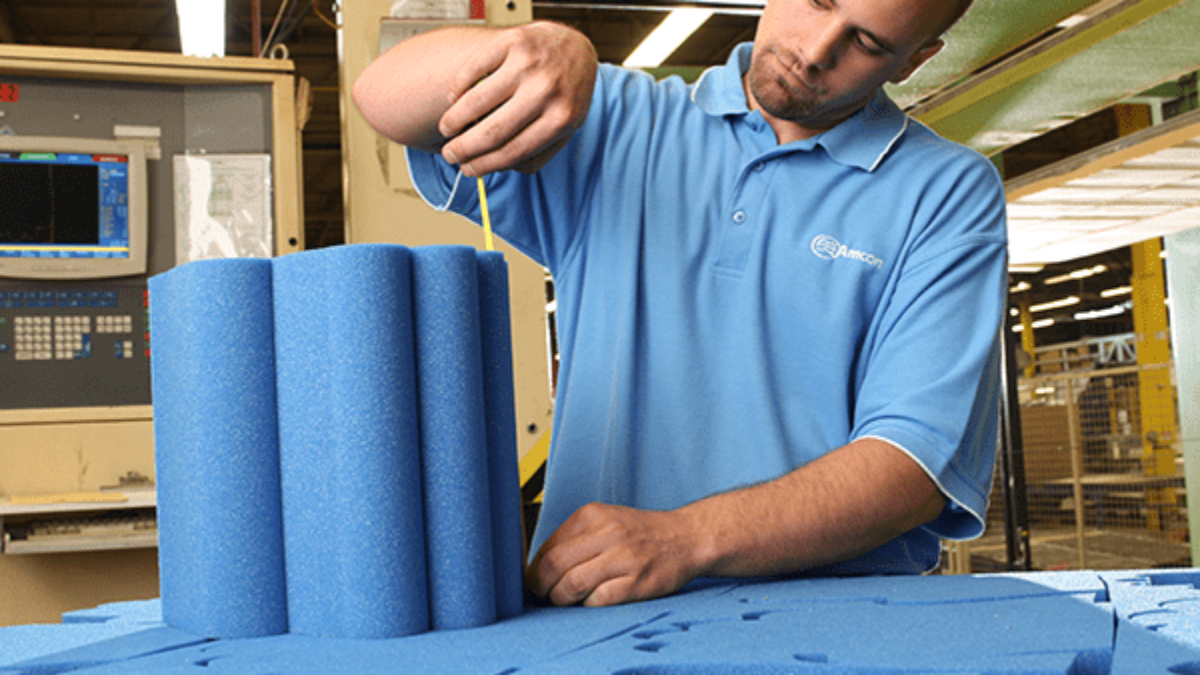Polyurethane foam (PU) is a versatile and widely used material with applications that span from furniture and mattresses to insulation and automotive components. It’s also a heavily used packaging material because of its low weight and high protective properties. There are many uses for polyurethane foam, but it’s not right for every application. We’ll examine the foam’s composition, the advantages of using it, and its diverse range of applications to help you determine if it’s right for you.
What Is Polyurethane Foam?
Polyurethane foam is a flexible synthetic polymer and a type of open cell foam. The material is created through a chemical reaction between diisocyanates and polyols, resulting in a material that varies in density, firmness, and porosity. The foam begins in a sold phase as a polyurethane elastomer. Blowing agents are then added to the foam to insert air into the elastomer. These tiny air pockets give the foam its open cell properties, which allow the material to act as a good thermal and acoustic insulator while maintaining a low density and flexible form.
The Benefits of Polyurethane Foam
Polyurethane foam offers a multitude of advantages, including:
High Resilience: PU foam can quickly return to its original shape after being compressed (known as viscoelasticity), making it an ideal choice for applications where it is often being compressed over and over.
Customizability: foam fabricators are able to adjust the density, firmness, and other properties of polyurethane foam to suit specific applications. There are many classifications of PU foam, each with their own capabilities. This versatility allows it to be used for upholstery and cushioning applications (in its flexible variations, insulation (in its more rigid variations), and many other applications.
Durability: polyurethane foam is known for its long-lasting durability to compression. However, it can have a low tear resistance, so it’s best used in applications where you need good shock absorption.
Acoustic and Thermal Insulation: because open cell foams have air pockets within them, they are good at trapping air and preventing it from moving through the foam. This makes PU foam an effective foam for soundproofing and thermal insulation.
Lightweight: polyurethane foam is remarkably lightweight and offers a great strength to weight ratio.
Adherence to Regulations: polyurethane foam can be engineered to meet specific fire safety and other industry standards, making it a good material choice for applications in harsh environments.
The Applications of Polyurethane Foam
The versatility of polyurethane foam allows it to be used in a wide range of applications:
- Furniture and Bedding: mattresses, couch cushions, office chairs, commercial seating, etc.
- Construction and Insulation: rigid versions of polyurethane can be used as insulation in buildings.
- Automotive: PU foam is utilized in car seats, headrests, and other interior components.
- Marine: from life jackets to engine insulation, polyurethane foam provides buoyancy and durability for marine applications.
- Medical Devices: the healthcare industry uses PU foam in medical cushions and other devices.
- Packaging: protective packaging for delicate items is often crafted from PU foam, providing cushioning and shock absorption during transit.
- Soundproofing and Acoustics: polyurethane foam helps control sound and dampen vibrations.
Is Polyurethane Foam Right for Your Application?
PU foam plays a vital role in many industries. Whether it’s right for your application depends on how the foam is being used as well as the environment it’s being placed in. Our foam experts can help you make the right choice when it comes to your foam, and we can help custom fabricate parts to fit your application every time. Get in touch with our foam experts today to talk about your foam needs.


